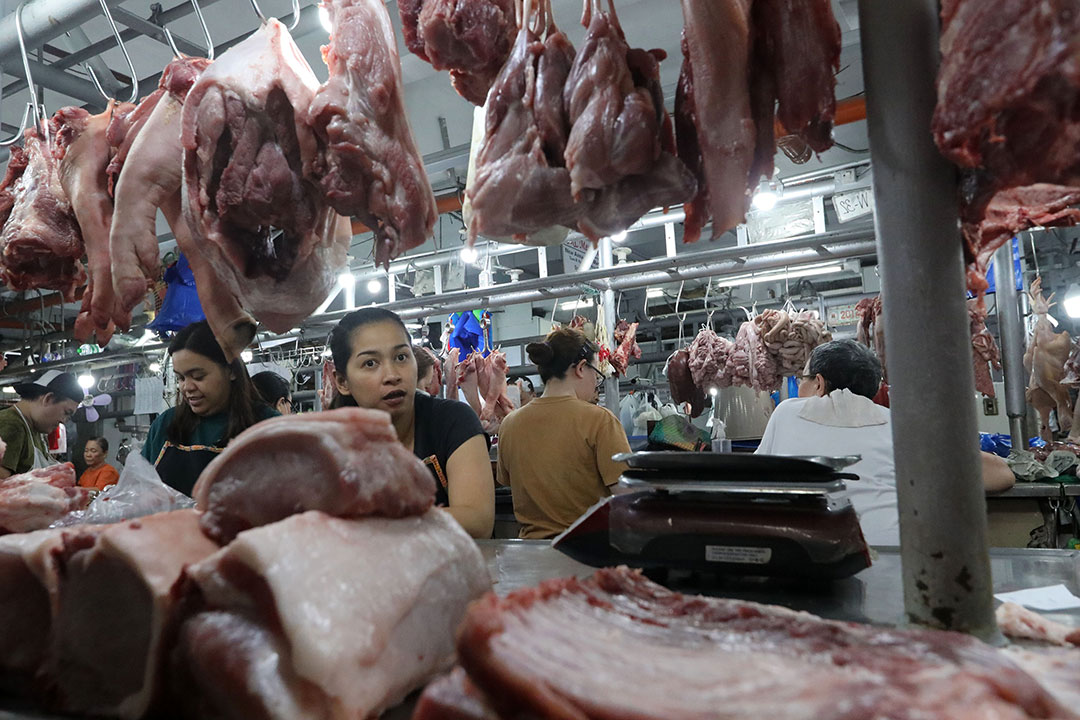
Upgrade to High-Speed Internet for only ₱1499/month!
Enjoy up to 100 Mbps fiber broadband, perfect for browsing, streaming, and gaming.
Visit Suniway.ph to learn
 A vendor waits for customers at a stall in a market in Manila. — PHILIPPINE STAR/EDD GUMBAN
A vendor waits for customers at a stall in a market in Manila. — PHILIPPINE STAR/EDD GUMBANBy Chloe Mari A. Hufana, Reporter
APRIL INFLATION that’s likely to go below 2% gives the Philippine central bank “a lot of policy space,” while first-quarter growth that could be near or below the government’s 6-8% target would be an “important factor” in the Monetary Board’s policy meeting next month, according to its governor.
“I think it would be a good number,” Bangko Sentral ng Pilipinas (BSP) Governor Eli M. Remolona, Jr. told reporters at the presidential palace on Monday, referring to last month’s inflation. “It gives us a lot of policy space. It makes our life easier.”
Inflation likely settled at 1.3% to 2.1% last month, according to BSP estimates released last week, which gives it leeway to cut benchmark interest rates further.
A BusinessWorld poll of 14 analysts last week yielded a median estimate of 1.8% for the consumer price index (CPI) in April, same as the March print.
The Philippine Statistics Authority is set to release the April inflation data on Tuesday (May 6), and preliminary first-quarter GDP data on Thursday (May 8).
Gross domestic product (GDP) growth that could be below the full-year goal of 6-8% also puts pressure on the BSP to ease monetary policy and stimulate growth.
“Growth will be an important factor [when] we decide in June,” Mr. Remolona said.
The BSP’s next policy meeting is on June 19.
The Monetary Board in April resumed its easing cycle with a 25-basis-point (bp) rate cut, bringing the key rate to 5.75%. It lowered rates by a total of 75 bps in 2024.
Philippine GDP likely expanded by 5.8% in the first quarter, according to a median forecast of 15 economists and analysts polled by BusinessWorld, picking up from the revised 5.3% in the fourth quarter of 2024.
However, it would be a tad slower than the 5.9% growth recorded in the first quarter of 2024.
“Low inflation may be a sign of better supply control, but can also reflect slowing demand, of which the latter can negatively impact growth. Rate cuts can help with driving demand higher as it makes borrowing costs cheaper, allowing credit growth,” Reinielle Matt M. Erece, an economist at Oikonomia Research and Advisory, Inc., said in a Viber message.
Mr. Erece said he understands why the BSP is “hesitant,” as heightened global uncertainty can affect inflation.
“Right now, the Fed is hawkish on policy as they weigh in on the impacts of tariffs. This may be the time for the BSP to perhaps deviate from the Fed’s moves and decide policy based on what the country needs.”
Rizal Commercial Banking Corp. Chief Economist Michael L. Ricafort said inflation likely eased to 1.6% year on year in April. He expects inflation to average 2.2% for the full year, well within the BSP’s 2%-4% target range.
With subdued inflation and slowing economic growth, he said the BSP is expected to continue cutting policy rates to support growth.
“Relatively benign inflation at 2% levels is already possible for most of 2025, well within and even at the lower end of the BSP’s inflation target of 2%-4%, thereby could justify/support future local policy rate cut/s that would match future Fed rate cuts in 2025,” he noted.
Filomeno S. Sta. Ana III, cofounder and coordinator of Action for Economic Reforms, said Mr. Remolona’s statement points to the further easing of monetary policy.
“Inflation is no longer a binding constraint,” he said in a Viber chat. “What should worry us is fiscal policy that has encouraged unproductive, inefficient and corruption-prone government spending, made worse by government’s rolling back of tax reforms.”
Mr. Remolona earlier signaled further rate reductions this year as the benchmark is still “slightly restrictive.” Rate cuts will likely be delivered in “baby steps” or in 25-bp increments, he said.




